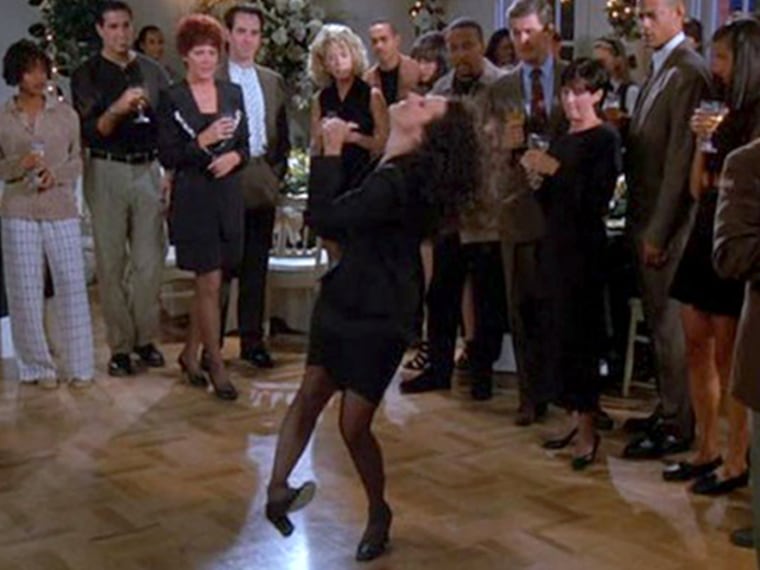By Bill Briggs
All these years, I thought it was because I was white. And straight. And old.
Sure, I’ll get my freak on if I hear “Disco Inferno,” or when Mary J. is in the spot. (Told you I was old. And let me add: Don’t need no hateration.) But my steps aren’t smooth. Those beats and my body never truly connect -- despite what the cocktails tell me. On the dance floor, I'm the male Elaine from "Seinfeld," all kicks, thumbs and no rhythm.
Turns out, it’s all in my head, not my hips or feet. A study, released today by researchers at the University of Oxford in England, claims a tiny messenger in the brain is partly to blame for those among us who struggle to grasp the latest dance moves.
This is all about GABA (short for gamma-aminobutyric acid). Again: not Gaga, GABA. A naturally occurring chemical, GABA is a bit like the brain’s traffic cop. Nerve cells in the brain are constantly firing and “talking” to each other. GABA helps keep all that chatter from getting out of control.
“Our research suggests that an important first step in learning that new skill is a decrease in GABA levels in the motor cortex,” explained Dr. Charlotte Stagg, a junior research fellow at Oxford and at John Radcliffe Hospital. Her study was published online in the journal Current Biology.
“It appears that GABA levels in some people are more easily modulated than in others, and that the differences between people (are) related to their ability to learn” new movements, Stagg said.
OK, she blinded me with science. So, in other words, people with brains that better restrain or regulate their GABA amounts have an easier time mastering motor tasks like tennis strokes, piano songs, or dance sequences?
“Less is more, certainly,” Stagg said.
She and her fellow researchers at the British university used “transcranial stimulation” in test patients, then looked at the link between their GABA decreases and their knack for learning a simple series of finger movements. (Transcranial stimulation is a non-surgical, non-invasive way to excite brain neurons in people by using weak electric currents and rapidly changing magnetic fields.)
Now, back to the dance.
Is there any way, I asked Stagg, for bad dancers to overcome their GABA issues so that they can, maybe, look less dorky on the floor?
The scientist offered a dash of hope with just two words -- both rooted, she said, in previous research: “More practice.”
Bill Briggs is a frequent contributor to msnbc.com and author of “The Third Miracle.”
Find The Body Odd on Twitter (@bodyodd) and Facebook (facebook.com/bodyodd).
